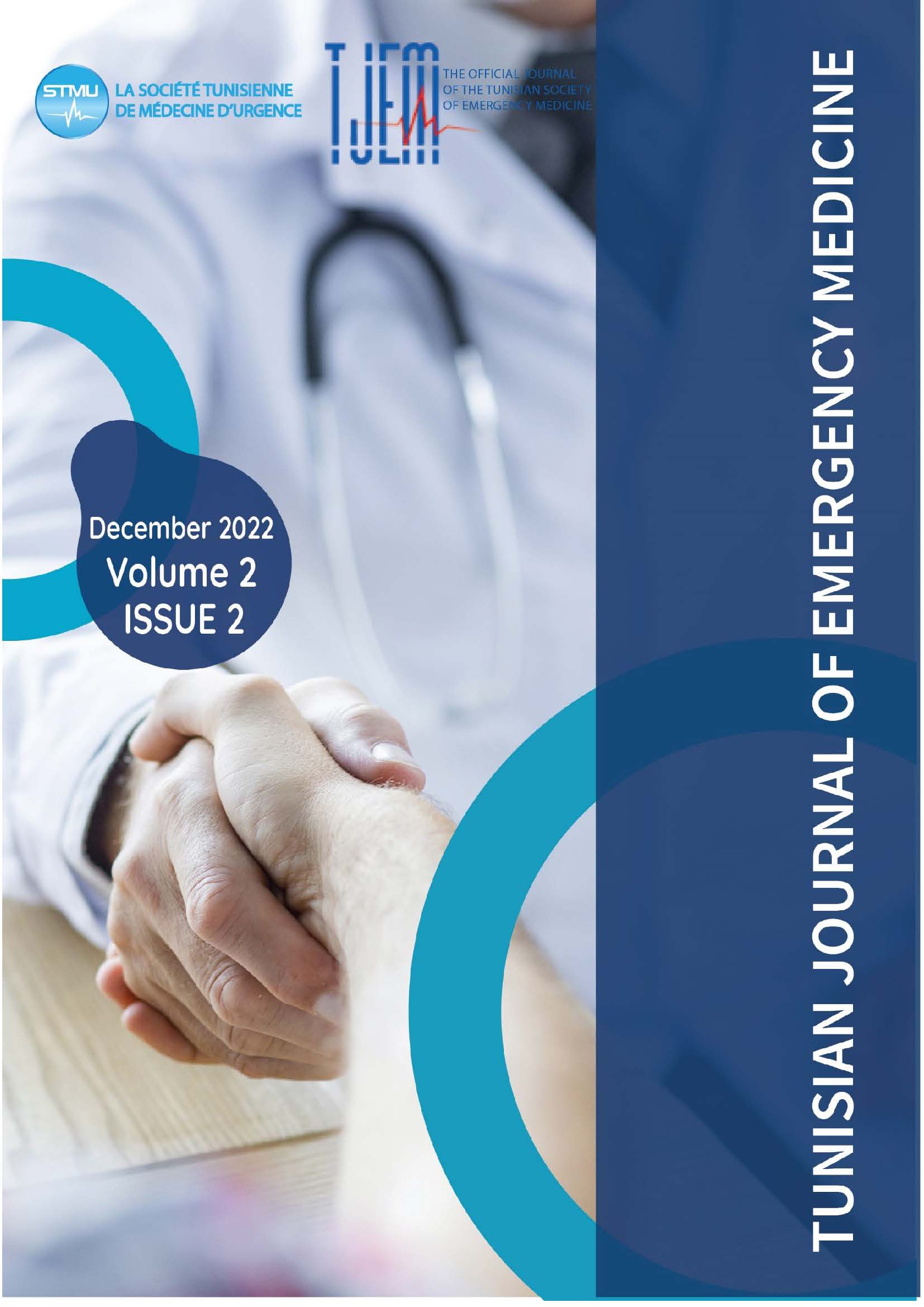Importance of Simulation in setting up ultrasoundguided vascular access
Ikhlass BEN AICHA, Yassine MEKSI, Rym YOUSSEF, Hajer YAAKOUBI, Lotfi BOUKADIDA, Asma ZORGATI, Riadh BOUKEF
DOI:
https://doi.org/10.0000/dgxfx120Keywords:
Simulation,, Ultrasound, Vascular access, Emergency department, critical care, Peritraumatic distress inventoryAbstract
Background: Simulation is considered a major educational tool in medical practice as well as in the
acquisition of technical and non-technical skills. Similarly, ultrasound takes an important place in the
world of simulation, in particular for the realization of vascular access in emergencies and intensive care
units. Ultrasound-guided vascular access is an invasive and precise gesture, hence the objective of
evaluating the contribution of simulation in the success of ultrasound-guided vascular access and the
stress management of the learners.
Materials and methods: This study aimed to assess the learning of the ultrasound-guided vascular
access gesture and the stress management by simulation among medical residents, from emergency,
medical and surgical resuscitation departments. We based on the Heart Rate (HR), the ENS score, the
STAI score, and the PDI score measurement before and after simulation, during 03 simulation sessions,
within a Tunisian university hospital. Sessions were animated by 02 monitors using a simulator vascular
access and an ultrasound machine equipped with a high-frequency linear probe.
Results: 20 residents were included. During the evaluation, we found that (55%) of learners felt
discomfort with vascular access in general, (75%) have already participated in a simulation session, and
(90%) have already had a passage by intensive care units. We had 100% of satisfaction. A significant
statistical relationship was found between the decrease in HR and in the time taken to perform the gesture
after the simulation session (p = 0.001) and a significant decrease in the ENS score of each candidate (p
= 0.021). A significant decrease also in HR was objectified for participants who completed the procedure
for several passages nor the
variation of the PDI score interferes in any statistical analysis with the decrease of the HR or the time of
realization of the gesture.
Conclusion: Today the real challenge of simulation in medicine is to link the technical and pedagogic
quality of medical education. Our study made it possible to show a significant satisfaction of the learners
during the simulation session, in the pose of ultrasound-guided vascular access, the reduction of the time
of realization, and the positive effect of the simulation on the reduction of stress as being an omnipresent
factor.HR=heart rate, STAI=Stat Trait Anxiety Inventory, PDI= Peritraumatic distress inventory
ENS= numeric stress scale.
Downloads
Published
Issue
Section
License
Copyright (c) 2022 Tunisian Journal of Emergency Medicine

This work is licensed under a Creative Commons Attribution-NonCommercial-ShareAlike 4.0 International License.
How to Cite
Similar Articles
- safia othmani, Ischemic acute cholecystitis: a case report , Tunisian Journal of Emergency Medicine: Vol. 2 No. 4 (2024): TJEM Vol2 Issue4
- Haifa BRADAÏ, Rabeb Mbarek, Sondes Laajimi, Dorra Loghmari, Mounir NAIJA, Atrial flutter mimicking ST-elevation myocardial infarction: A case report , Tunisian Journal of Emergency Medicine: Vol. 3 No. 1 (2025): TJEM 2025: Vol.3 Issue 1
- Dorra Loghmari , The beneficial learning by simulation in the acquisition of non-technical skills among medical students , Tunisian Journal of Emergency Medicine: Vol. 2 No. 3 (2023): TJEM Vol2 Issue3
- Neila MAAROUFI, Firas Kessentini, Sabra Ouaz, Meriem Jemili, Moufida Nouari, Jihen Lakhal, Bilateral ptosis caused by midbrain hemorrhage: a case report , Tunisian Journal of Emergency Medicine: Vol. 3 No. 1 (2025): TJEM 2025: Vol.3 Issue 1
- Fatma Hbaieb, Low Back Pain Revealing Bilateral ProximalPulmonary Embolism with COVID-19 , Tunisian Journal of Emergency Medicine: Vol. 2 No. 4 (2024): TJEM Vol2 Issue4
- Samia Meherzi, Rihab Omri, Amin khbou , Rabiaa Kaddechi , Afifa CHARFI, Management of Bell palsy: our clinical practice guideline , Tunisian Journal of Emergency Medicine: Vol. 3 No. 1 (2025): TJEM 2025: Vol.3 Issue 1
- Asma ZORGATI, Short and long-term outcomes of patients presenting with Acute Coronary Syndrome without ST-segment elevation (NSTE -ACS): findings from a Tunisian Register: the ReSCUS Register , Tunisian Journal of Emergency Medicine: Vol. 2 No. 2 (2022): TJEM Vol2 Issue2
- Mounir Hagui, Sonia Slimi, Riadh Allani, Civil-Military Collaboration for health emergency preparedness , Tunisian Journal of Emergency Medicine: Vol. 2 No. 4 (2024): TJEM Vol2 Issue4
- Lassaad CHTOUROU, Jejunal Diverticulosis: Review , Tunisian Journal of Emergency Medicine: Vol. 2 No. 4 (2024): TJEM Vol2 Issue4
- olfa djebbi, A dramatic course of COVID-19-associatedmeningoencephalitis without respiratoryinvolvement: a case report , Tunisian Journal of Emergency Medicine: Vol. 2 No. 4 (2024): TJEM Vol2 Issue4
You may also start an advanced similarity search for this article.

